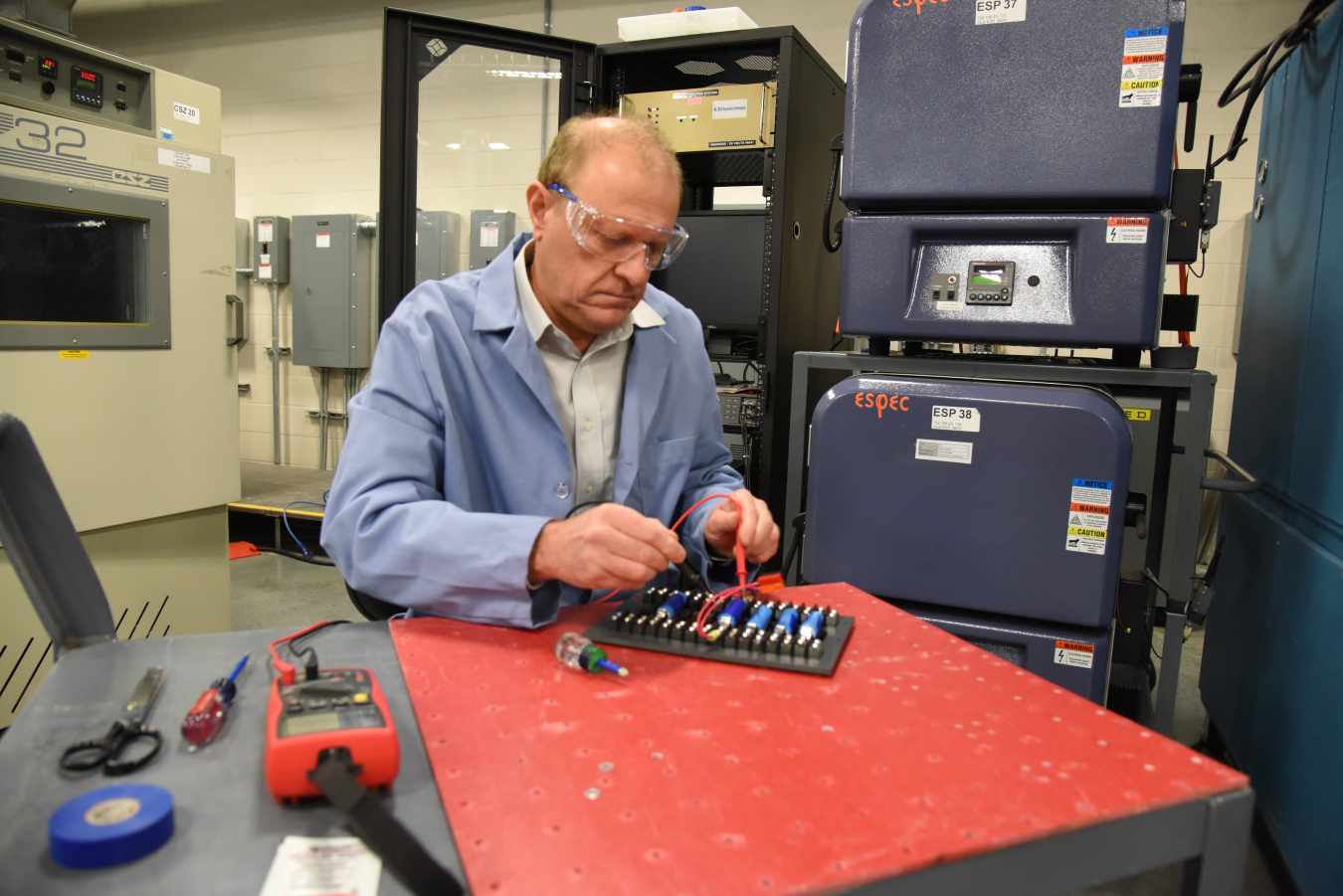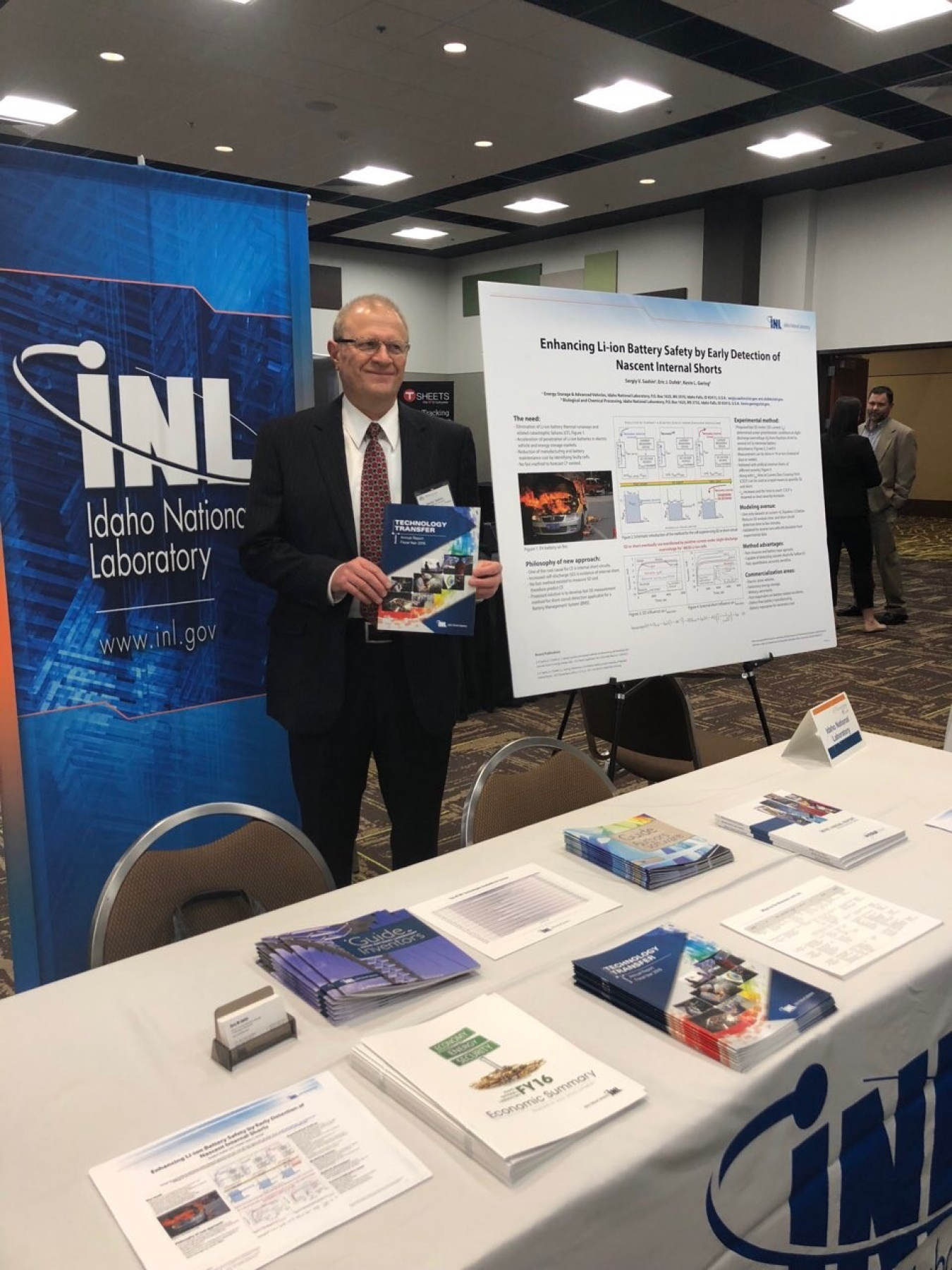The Battery Health Sentry project led by Dr. Sergiy Sazhin and his team at the Idaho National Laboratory (INL) was conceived over a decade ago and resulted in a new approach for battery health monitoring.
Office of Technology Transitions
August 21, 2023A Technology Commercialization Fund Success Story
Introduction
The Battery Health Sentry project led by Dr. Sergiy Sazhin and his team at the Idaho National Laboratory (INL) was conceived over a decade ago and resulted in a new approach for battery health monitoring. The project was initially funded through the INL Directed Research and Development program and focused on detecting developing battery failures earlier and shockingly faster. This project has become even more relevant in recent years as the demand for lithium-ion batteries has skyrocketed given the transition over to electric vehicles and other clean energy technologies. Because of the technology’s potential for commercialization, the team received funding to mature this battery monitoring technique from the Technology Commercialization Fund in 2016, provided by the Department of Energy’s Energy Efficiency and Renewable Energy Vehicle Technologies Office and administered by the Office of Technology Transitions. Today, Novus Sentry has licensed this technology and is exploring several initial pilots and use cases as they continue to bring this tech to market.
The Need for Battery Health Sentry
Although lithium-ion batteries are found in a wide array of applications, from mobile phones to commercial airliners, the continued expansion of lithium-ion batteries is hindered by safety, durability and reliability concerns. Sergiy recognized the need for a better monitoring technique during his time in the private sector, “When I was doing R&D in product development, we would receive these internal safety studies about how batteries would explode or cause fires. It was clear to me that these were internal shorts and to prevent undesirable safety outcomes, we would need to measure them somehow.”

So, Sergiy and his research team at INL began developing a new, fast metric—self-discharge (SD) current—as a way to detect developing internal shorts and assess battery safety. He sees the list of use cases growing by the day, “When there were huge floods in Florida last summer, there were tons of vehicles submerged in saltwater that nobody knew what to do with. Our technology could be used to inspect these damaged vehicles. It can answer the question of ‘what is the quality of the batteries after a catastrophic event?’”
Progress Made through TCF Funding
During the TCF period, Sergiy and his team were able to raise the Technology Readiness Level from a 3 to a 5, finalize a key patent application, and publish their findings in 3 papers in academic journals. The technology also received recognition as a 2017 Idaho Innovation Award Finalist as well as 2018 and 2019 R&D 100 Award Finalists. “The data collected and the reporting completed for the TCF project was very helpful in being able to attract interest from industry for Battery Health Sentry,” Ryan Bills, Senior Commercialization Manager at INL, explains as he reflects on the commercialization efforts after TCF. After the team completed their TCF project, the technology attracted the attention of Innovyz USA, a Chicago-based company that works with universities and laboratories to find new technologies ready for commercialization. Innovyz ultimately decided to license the Battery Health Sentry technology and formed a new company, Novus Sentry, to bring this technology to market.
Alex Williams, CEO of Novus Sentry, explained the appeal, “It was a fairly mature technology that had been demonstrated successfully in the lab environment on industry standard cells. The methodology clearly lent itself to field use and offered the opportunity to radically reduce test times from days to minutes. The team of inventors was also a compelling part of the decision to license the technology due to their deep functional expertise and incredible enthusiasm for the technology. After licensing, the PIs were incredibly helpful in the knowledge transfer process, which in turn allowed us to validate the technology outside of the lab and truly productize it with prototypes in the hands of customers."

Looking Forward
For now, the Novus Sentry team is busy testing out different go to market strategies and validating interest from industry partners. Williams explains, “We’ve been engaged with companies working in the defense and microgrid industries, as well as the consumer products space which carry the liability for huge quantities of lithium-ion batteries. The consistent feedback has been that this addresses an unmet need to rapidly assess battery health and flag nascent faults before they progress to catastrophic faults. This fills a huge void for companies that are responsible for delivering battery packs but do not manufacture the cells themselves.” The Novus Sentry team is full steam ahead as they continue to work with industry partners to make batteries safe and reliable in the most critical applications.
The Office of Technology Transitions (OTT) oversees the expenditure of the U.S. Department of Energy technology transfer funds through implementing the Technology Commercialization Fund (TCF) across the Base Annual Appropriations TCF and the Bipartisan Infrastructure Law TCF. The Base Annual Appropriations TCF is the base program created by the Energy Policy Act of 2005, which provides an estimated $35 million annually to support the commercialization of National Lab technologies and build out the National Lab commercialization ecosystem. The Bipartisan Infrastructure Law (BIL) provided more than $62 billion to DOE for Research, Development, Demonstration, & Commercial Application. To learn more, visit Technology Commercialization Fund | Department of Energy.
To learn more about Novus Sentry, please visit Home | Novus Sentry.

